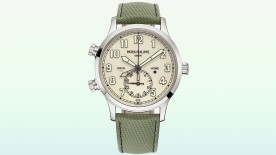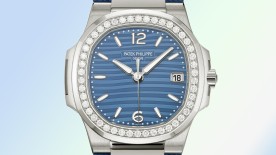A hyper-horology ultra-complication. Yet more marketing hyperbole? Not this time. The Monovortex by Roger Dubuis, a concept watch not intended for sale, lays the foundations for a completely new approach to watchmaking. It’s impressive stuff.
Roger Dubuis’ penchant for “Hyper-Horology” is well known. The manufacture has always tended to the extreme in terms of positioning, exclusivity and aesthetic. But when you scratch the surface, the complications involved are generally familiar, like the tourbillon. The double tourbillon, with or without an incline, is obviously much more rare, but it remains a known quantity in the industry. Purnell, Louis Moinet and Greubel Forsey have all experimented with it, to different ends, but building on the same basic concept.
With the Monovortex Split Seconds Chronograph, Roger Dubuis is stepping on the accelerator. Foot to the floor, in fact. The Monovortex is crammed so full of innovations that, in the future, people will talk about “before” and “after”. Love it or hate it, the evidence is indisputable: it genuinely pushes the boundaries of what’s possible in watchmaking.
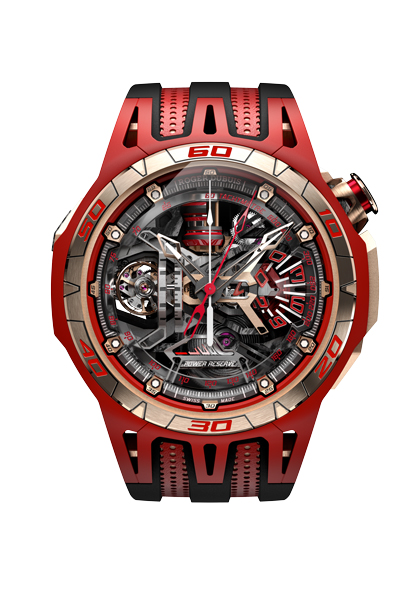
The Conical Monovortex Tourbillon
To fully understand the Monovortex, you almost have to deconstruct it, piece by piece. The most visible component, at 9 o’clock, is the tourbillon. We’re used to Roger Dubuis’ tourbillons being laid flat, slightly inclined, or tipped up at 90° – alone or doubled up.
In the Monovortex, the tourbillon follows a conical 360° trajectory. Imagine an upside-down pyramid, rotating on its point. That’s the first rotation. Then, imagine a balance wheel attached to the surface of the pyramid, which also rotates. That’s the second rotation.
Is this mechanism devised by Roger Dubuis actually a “tourbillon” in the sense of the one invented by Breguet? Purists might demur. Regardless: the principle developed by Roger Dubuis performs the same function – compensating for the effects of gravity.
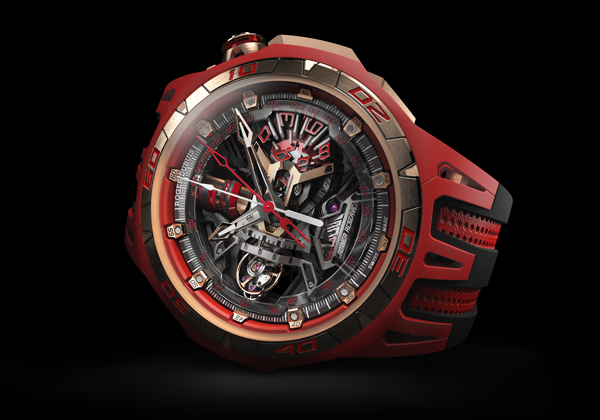
First vertical micro-rotor
The second major innovation of an existing watch part concerns the micro-rotor. Roger Dubuis’ enthusiasm for this miniaturised oscillating weight, more readily accommodated in extreme skeletonised architectures, is well known. But this time, the manufacture has gone even further. Here too the usual codes have been inverted, because for the first time, the micro-rotor is vertical. It’s a different concept from that of the Golden Bridge Automatic by Corum, where a weight slides along a vertical axis, like a lift. In the Roger Dubuis timepiece, the weight rotates perpendicular to its axis, like a bead on a string. The idea is compelling, highly technical (8 months in development) and takes up no more room than a flat oscillating weight. And in any case, the goal of the Monovortex is not to achieve a classic ultra-thin profile; it’s to optimise winding power in a creative and innovative way.
This vertical micro-rotor can be seen clearly at 12 o’clock. The only question remaining is – is it as efficient as its predecessors? The manufacture is giving nothing away. But it’s a safe bet that it is at least comparable.
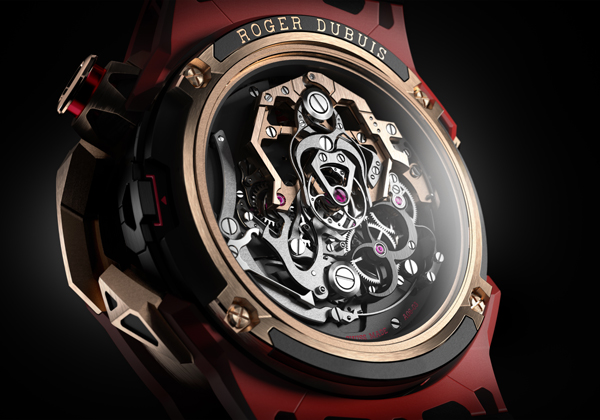
Fibre optic power reserve
On the other side of the dial, at 6 o’clock, we find the stunning power reserve. Many different strategies have been employed to show this indication – hands, marbles (Cyrus), gauges (Reservoir) and a variety of more or less baroque devices.
Roger Dubuis uses optic fibre. The idea was previously explored by Urwerk for a seconds display, but never before for the power reserve. Roger Dubuis connects fibre to the barrel, whose gradual depletion is shown on a translucent scale in various shades of red. It looks for all the world like liquid crystal, or the dashboard of a F1 racing car. Astonishing.
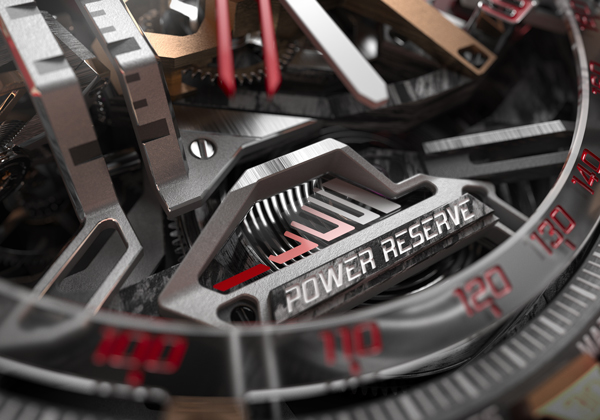
Split seconds with a dual display
To wrap up the complications, Roger Dubuis’s Monovortex doubles up as the manufacture’s first integrated split-seconds chronograph, with two column wheels and a horizontal clutch. It works in the traditional way, with two central hands, but the hour and minute totalisers are more unusual.
The 30-minute counter is between 2 and 4 o’clock. The hand has three pointers, engraved with a 0, 1, 2 or 3, to show whether the counter has reached 10, 20 or 30 minutes. The tip of the hand traverses a 120° arc to show the precise minute.
The seconds are on the central hand. The watch’s main seconds hand appears at 9 o’clock, with a double bridge and an interplay of two segments in the centre. They are indexed to the tourbillon, which performs one rotation every two minutes.
This 47 mm timepiece is one of a kind and not intended for sale. Nevertheless, its innovations will undoubtedly fertilise Roger Dubuis’ future creations.



